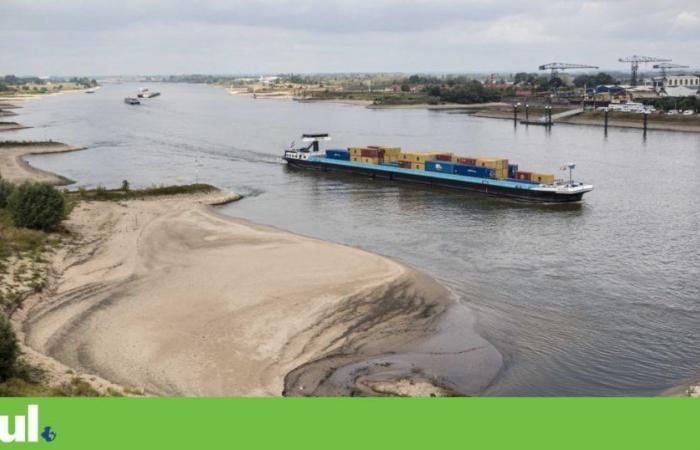Rivers are no longer the same – and the climate crisis is “to blame” for the disruption of the seasonal flow of the river network in the Northern Hemisphere, suggests a study published this Thursday in the journal Science. These changes could threaten not only riverine ecosystems, but the water security of Europe (Scandinavia, in particular), Russia and Canada.
“Our paper shows, for the first time, that the seasonality of river flow is weakening in the high northern latitudes. This is no longer a local or regional phenomenon. Furthermore, the study establishes the physical scientific basis that climate change induced by humanity caused this phenomenon”, co-author Junguo Liu, professor at the University of Science and Technology of South China, in Shenzhen, explained to PÚBLICO.
By analyzing historical data series from 10,120 hygrometric stations around the world, scientists found that 21% of these units showed significant changes in the seasonal rise and fall of water levels. The volume of information studied covered monthly flow measurements recorded from 1965 to 2014.
“Our work shows that rising air temperatures are profoundly altering natural river flow patterns,” says Hong Wang, a PhD researcher at the South China University of Science and Technology and the University of Leeds, cited in a press release from the British institution.
Hong Wang explains that a worrying part of this change is “the observed weakening of the seasonality of river flows”, and that this is a direct consequence of greenhouse gas emissions. greenhouse effect caused by human activity. If temperatures continue to rise – remember that the planet has been recording consecutive temperature records for eight months – river flow will continue to decline steadily.
This was the first time that scientists were able to exclude direct human actions – such as the extraction of water for irrigation or the regulation of flows through dams, for example – and thus demonstrate that the weakening of the seasonality of river flow was driven by climate change.
The weakening of the seasonality of river flows translates, for example, into a reduction in river levels in spring and early summer in melting regions. This change in river behavior can affect not only the growth of plants along the banks, but the organisms that live in the river themselves.
“The region upstream of the River Rhine (which runs through Germany, France and the Netherlands) originating in the Alps has suffered a weakening of the seasonality of the river flow. The altered seasonality of the river flow can lead to changes in water availability throughout the seasons, with a shortage or excess of water in some months. This can affect the ability of communities to meet their water needs for agriculture during the crop growing season, as well as impacting freshwater biota”, says Junguo Liu.
These river disturbances can also threaten water security and biodiversity of fresh water, warn the authors of the study of Science, who consider it “essential” to develop strategies to alleviate the “future homogenization of seasonal flow” of rivers in places such as Scandinavia, the European portion of Russia and Canada.
“There is a growing need to accelerate climate adaptation efforts to safeguard freshwater ecosystems,” warns the study. These efforts are essential to “establish sustainable management of water resources”, the document reads, “identifying and mitigating risks related to floods and droughts, exploring storage opportunities and optimizing reserves for irrigation or hydroelectric power generation”.
Tags: climate crisis dangerously changing flow rivers Climate
--





